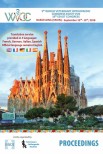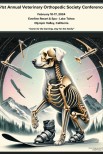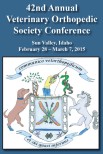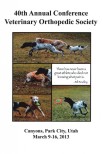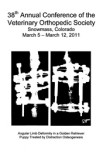Objective: To evaluate the complication rate following proximal ulnar osteotomy (PUO) performed in conjunction with the use of an intramedullary pin and bone morphogenetic proteins in dogs, and to assess the impact of these variables on surgical outcomes.
Study design: Retrospective study.
Sample population: A total of 93 limbs (74 dogs).
Methods: Medical records and radiographs of dogs that underwent oblique PUO with intramedullary pin and recombinant human bone morphogenetic protein-2 (rhBMP-2) application between January 2022 and June 2024 were reviewed. Data collected included breed, age, weight, surgical indication, and postoperative complications, classified as minor or major. Radiographic assessments were performed to evaluate bone healing 6 weeks after surgery.
Results: Follow-up examination and radiographs were performed in all cases at a mean time of 6 ± 1.1 weeks after surgery. The overall complication rate was 7.4%, with major complications, primarily surgical site infections (4 out of 5 cases), occurring in five of 93 limbs (5.3%). Minor complications, including seroma and delayed union, were observed in two of 93 limbs (2.1%). No cases of non-union were documented, with 92/93 limbs achieving radiographic healing within the expected timeframe. A total of 48 (64.8%) of the dogs treated were chondrodystrophic breeds, historically considered at high risk of complications.
Conclusion: The combined use of an intramedullary pin and rhBMP-2 was associated with low complication rates and enhanced bone healing, even in chondrodystrophic breeds.
Clinical significance: This study supports the use of an intramedullary pin and rhBMP-2 in PUO as a safe and effective strategy to minimize complications, including in high-risk breeds.


